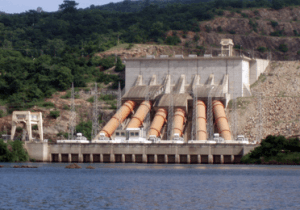Climate change threatens Ghana’s major energy infrastructure

Ghana’s major energy generation and transmission systems – dams and sub-stations – are under threat by flood and drought due cimate change impact.
The Akosombo, Sunon-Asogli, Bui, Kpong and Cenpower power plants, that provide electricity to 16.3 million people may grind to a halt due to the impact of climate vulnerability on their operations.
Equally, electricity sub-stations that serve some 3.9 million people in the Ga West, Hohoe, Ga South, Greater Accra and Sefwi Bibiani-Anhwiaso Bekwai are also under threat.
A cross-sectional study titled: “Ghana’s resilient infrastructure roadmap,” has revealed.
The roadmap is a 21-month joint work among eight ministries, eight agencies, the Global Center for Adaptation , the University of Oxford, the United Nations Office for Project Services and the United Nations Environment Programme, to identify and propose solutions to address priority adaptation needs in Ghana.
The study found that during project preparations, climate risk assessments were not required for new energy sector projects as part of Environmental Impact Assessments (EIA).
“For large scale, donor-funded energy sector projects, such as power plants and dams, EIAs are completed by consultants to comply with Environmental Assessment Regulations (1999) and donor requirements, but do not always incorporate future risks and uncertainties,” it said.
“For example, the EIAs for the recently planned Bui and Pwalugu dam projects utilised historic data on rainfall, hydrology and temperature, but not projections of future climate conditions and hazards to inform the design,” the report said.
It said, “This can increase the flood risk to downstream communities, potentially impacting their future energy supply, agricultural productivity and public safety if dam construction does not account for potential high levels of rainfall.”
“The national policy and planning instruments in Ghana’s energy sector and sub-sectors recognise climate change as an issue…it does not address the role of the energy sector in driving climate adaptation or identify goals, targets and actions required to manage climate risks for energy infrastructure and its users,” it further noted.
The Akosombo hydroelectric power plant in the Asuogyaman District, Eastern Region, with 1020 MW generation capacity and serving over 8.6 million people, was going to be affected by exposure to high drought intensity.
In the case of the Akosombo Dam, which serves over 8.6 million people, the report said: “The location of the power plant as well as a part of the Lake Volta reservoir, which supplies the plant… poses an increased risk of reduced river flow and a reduction in reservoir capacity, which reduces generation capacity.”
The report said the Kpong Dam would also be affected by drought hazard in addition to flooding, which could impact its 160 MW generation potential and 1.3 million people that relied on it for electricity.
The 560MW- Sunon-Asogli thermal power plant at Tema, serving over four million people, was equally exposed to river flooding hazards and likely to be vulnerable to coastal flooding from sea level rise and increased storm surge owing to its location near the sea coast.
Other prioritised power plants exposed to river flooding include the 400 MW Bui Dam, which served some 1.7 million residents.
Similarly, the 360 MW Cenpower CCGT plant, that provides power to 576,000 in the Tema industrial zone is also at risk of flooding.
On the sub-stations, the report said 21 substations faced some degree of flooding exposure under a high hazard scenario.
Substations in Ga West district, Ga South, Greater Accra, and Sefwi Bibiani-Anhwiaso Bekwai, were most exposed, which collectively threaten power disruptions to 2.7 million residents.
Two substations were prone to landslide hazards specifically the substation at Hohoe in the Volta region, which serves nearly one million residents living in a district with high vulnerability.
It recommended the construction of a seawall barrier to safeguard operations, flood protection mechanisms, tree planting along the reservoir and riverbanks, and sediment management.
The report suggested that some substations and their components needed to be elevated whiles others, relocated.
Dr Mohammed Amin, the Deputy Minister of Energy, commenting on the study, said the data management practice of the country on climate risk was weak and emphasised the need its strengthening.
Public infrastructural design and implementation, he said, must be open to allow public scrutiny to provide cost effectiveness and climate accountability.
Source: GNA
